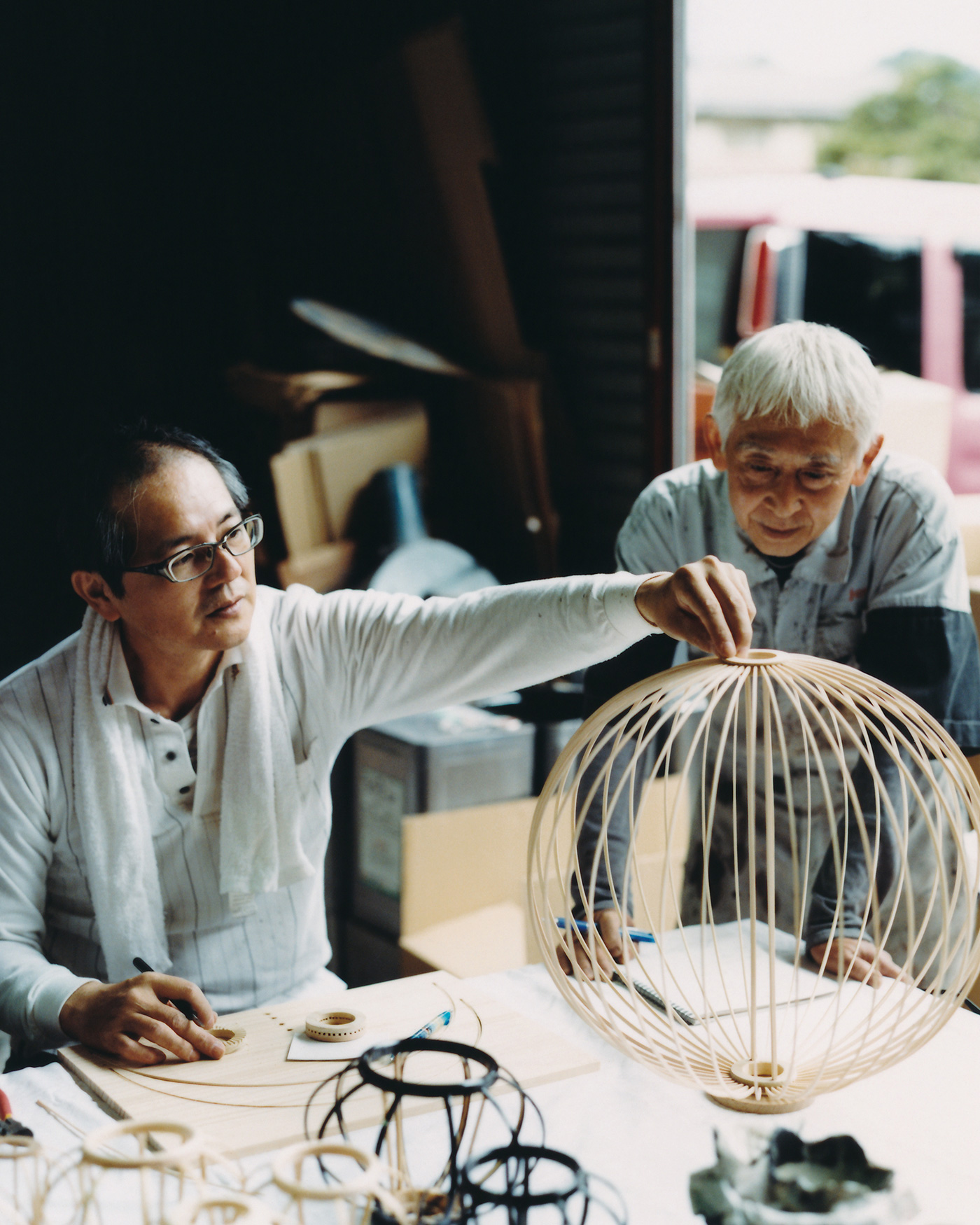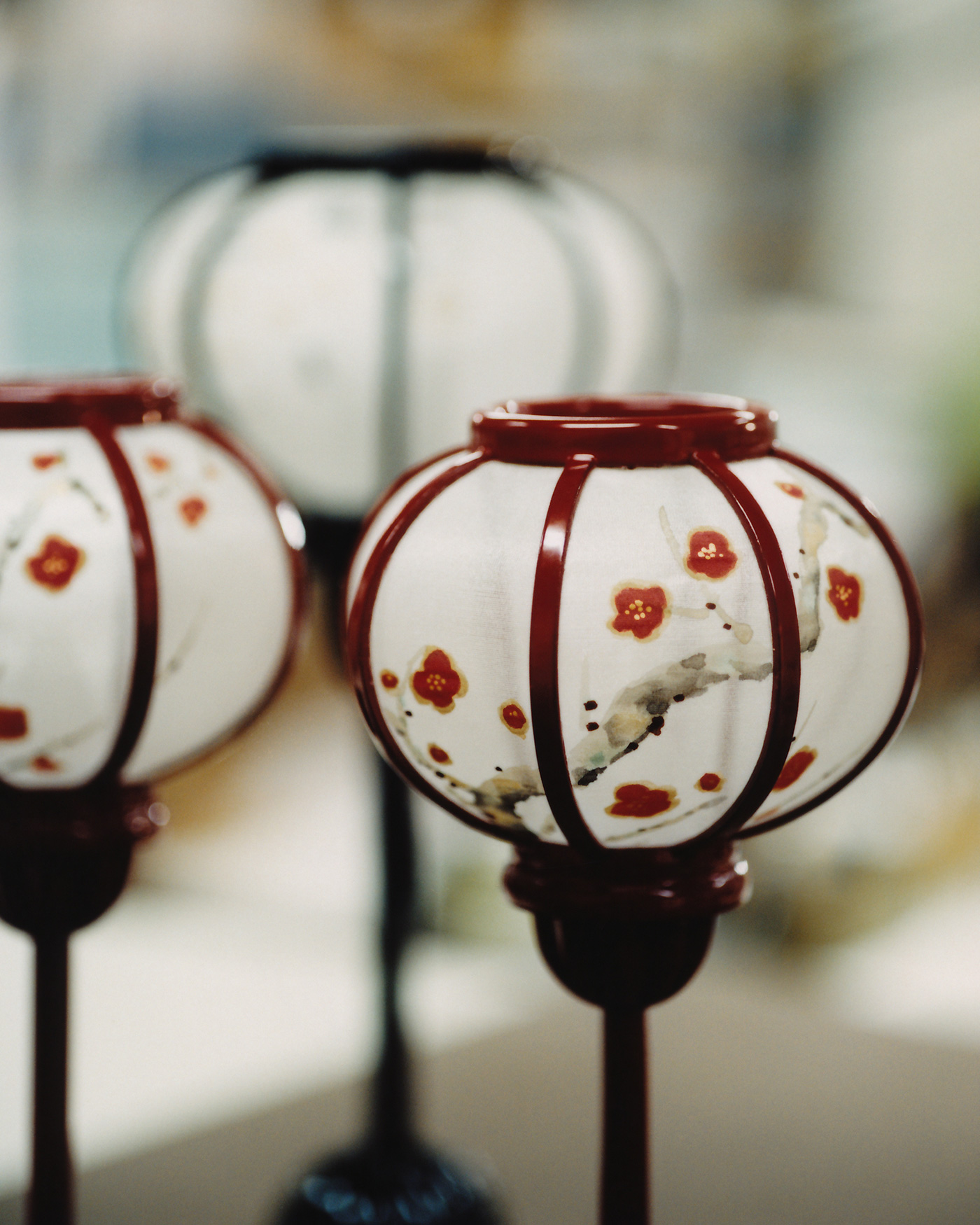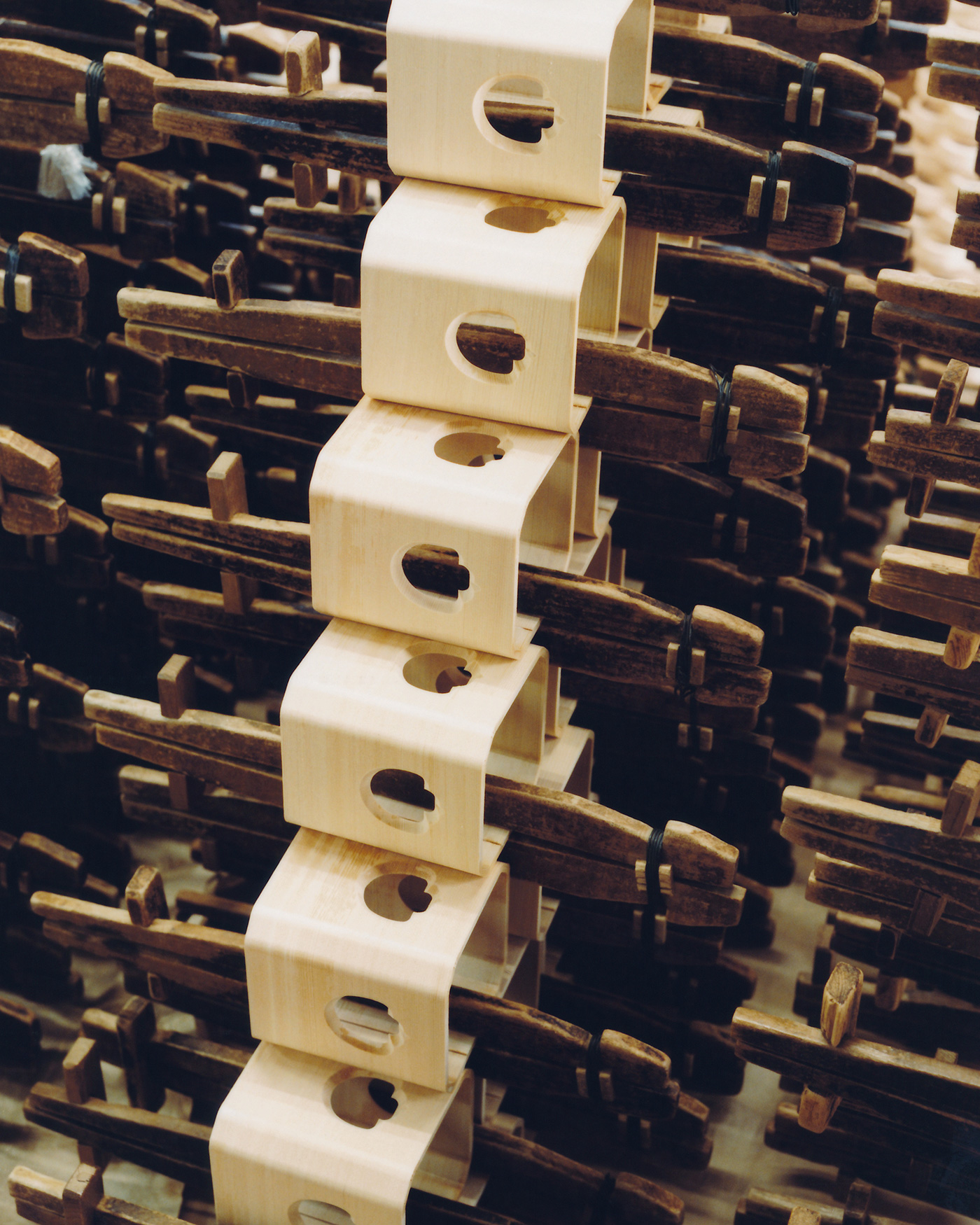Traditional Crafts・Production of Bonbori Lanterns
Founded 102 years ago, Ando Shoten has continued to create chochin and bonbori paper lanterns in Gifu, where high-quality wood and Japanese paper are readily available. With the craftsmen’s reliable skills and free-thinking not confined to tradition, they continue to create lights suitable for modern living. We spoke with the fourth-generation owner, Mr. Yasunobu Ando.

Gifu has long been a place renowned for lantern-making; could you explain the background for this?
During the Edo period, Nagoya, the home of the Owari Tokugawa family, was a thriving area for festive crafts such as dolls and lanterns. As the times changed from the Tokugawa era to the Meiji government, craftsmen who had been patronized by the Tokugawa family lost their jobs. They thought they had to personally preserve this culture, and so many lantern and bonbori craftsmen migrated to Gifu city, where Mino paper, wood, and bamboo were readily available. To have merchants and wholesalers in Nagoya purchase their goods, they moved to Gifu, where these higher quality materials were more easily obtained. Gifu has the clear-flowing Nagara River. It was a port where Mino paper, wood, bamboo, and other materials floated down from upstream. The location was good, so artisans using these materials for umbrellas, lanterns, and bonbori gathered, and the area became famous due to this historical background.
Craftsmen migrated from Nagoya; has the founder of Ando Shoten been working since the Edo period as well?
The founder, Yasukichi Ando, is my great-grandfather. I heard that he apprenticed with a craftsman in Nagoya after serving there when he was 10, and upon becoming independent, he returned to his hometown of Gifu.

In January 2021, bonbori lanterns were certified as traditional crafts for the first time in Japan. What points were evaluated for this recognition?
Nagoya festival decorations, consisting of dolls, bonbori, and banner flags (noboribata) from all of Aichi prefecture and parts of Gifu prefecture, were recognized as traditional crafts. Dolls have been designated as traditional crafts in other regions, but it is the first time for bonbori, which we’re very pleased about.
Nagoya festival decorations are characterized by dolls that combine the best techniques from both East and West. However, traditional crafts of dolls had already been designated in regions like Tokyo and Kyoto. Along with the traditional doll-making techniques, the distinctive culture of bonbori and banner flags have also been recognized, differentiating our production from that of other areas.
Are there no bonbori lanterns or banner flags in Edo or Kyoto’s festival decorations?
No, there aren’t. While there are regions that manufacture them in other production areas, at present, there are no places making traditional crafts using techniques from over 100 years ago.

Chochin and bonbori lanterns both emit a gentle light; can you tell us the difference between the two?
Currently, nationwide, there are those who specialize in manufacturing bonbori and those who specialize in manufacturing chochin. However, Ando Shoten is the only one that possesses the techniques for both, and that’s our strength. Lanterns are made by winding string around a wooden frame in a spiral pattern and then pasting Japanese paper or silk one piece at a time from the outside. Once dry, the inner frame is taken apart, pulled from the ring at the mouth, and can be folded to save space, which was very convenient in the past. It was usable by samurai, craftsmen, and commoners alike. Large tripod lanterns and beautiful silk palace lanterns were developed in the Meiji era by Teshigawara Naojiro in Gifu to be presented to the Meiji Emperor. As a result, Gifu’s lanterns became popular throughout the country.
On the other hand, the term “bonbori” evolved from the word “honwari,” which became “honnori,” and finally “bonbori,” meaning gently bright. Unlike lanterns that attach washi paper from the outside, bonbori are lined from the inside, attaching the paper to a curved surface. While drawing without an underpainting is the same as lanterns, bonbori have vertical bones called “honegi” not found in lanterns. Typically, heat is used to bend the honegi, but craftsmen with this skill are decreasing, and urgent measures are needed.
In the past, large bonbori adorned weddings, designed after the Imperial Chrysanthemum Crest. During that era, hina dolls were costly, owned only by the nobility. Bonbori were made large to prevent the fire from igniting the dolls and as they couldn’t be folded, they became a status symbol as houses with hina dolls had storage for large items. Chochin lanterns were convenient, elegant, and practical, while bonbori lanterns and the accompanying hina dolls were seen as noble. Though similar, their histories are entirely different and interesting.

How long does it take to master the techniques?
To be able to create with the level of quality referred to as a traditional craft, it takes 15 to 20 years. For painting, some people take many years, while others manage in a few years, so it varies. In our case, a pro in making hina doll bonbori isn’t just someone who draws unique works but someone who can make 100 items with the same quality and pattern. Often, those who want to draw on lanterns come for interviews, but our goal is to train people to draw 100 pieces in the same way.


Are all the processes related to bonbori lanterns done in-house?
We do outsource some of the woodworking. In Gifu, there are various craftsmen, such as those who bend the wood, those who make only the mouth rings, and those who specialize in woodworking the base parts on a lathe. Our specialty is assembling the parts finished by specialized craftsmen, and then doing the pasting and painting. We also do the painting at our own factory in Yamagata City. In terms of carpentry, we play a role similar to a master carpenter. For example, there’s a ring called a mouth ring, and we ask craftsmen who can make and bend it to create it, entrusting what they are good at to the people who excel at it.







